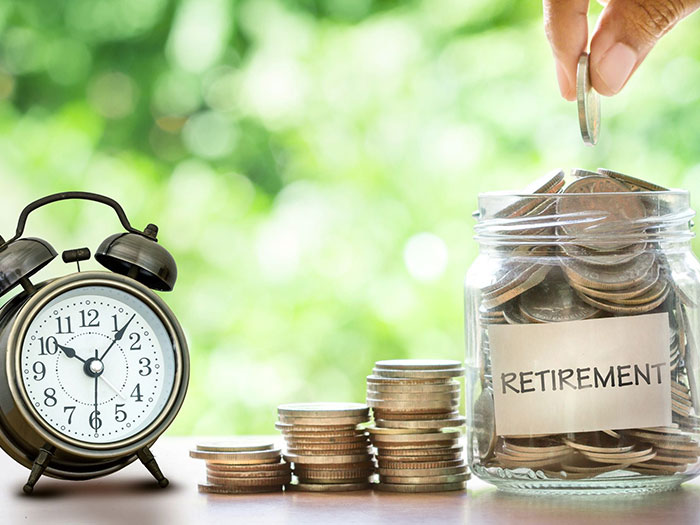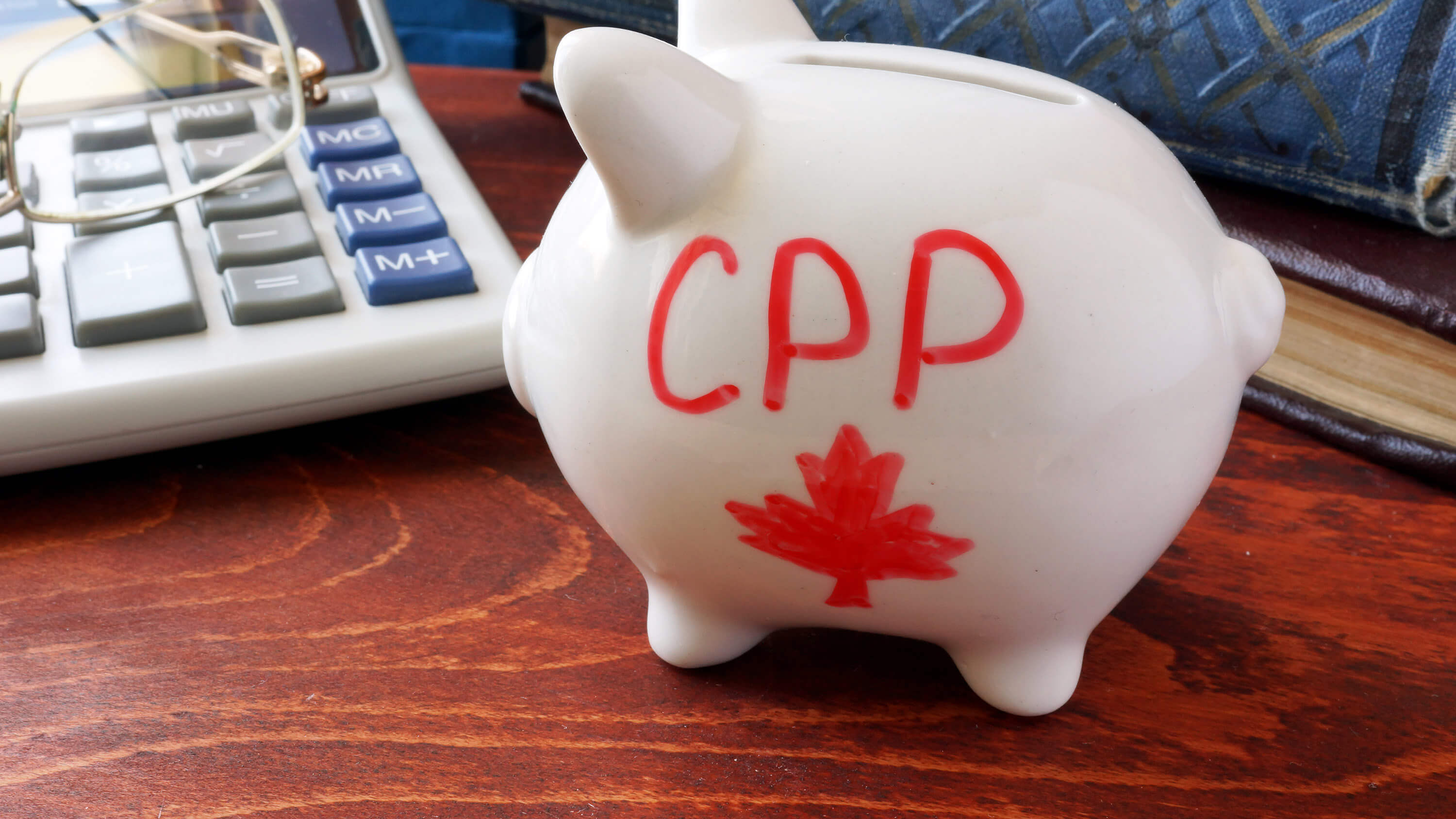 We, self-employed small business owners, will all eventually retire. Without a pension plan like government employees or even some employees of private corporations receive, how will we survive? What will retirement look like for each of us? Will we have enough financial resources to put food on our table, pay our health expenses, keep our vehicles running, etc.
We, self-employed small business owners, will all eventually retire. Without a pension plan like government employees or even some employees of private corporations receive, how will we survive? What will retirement look like for each of us? Will we have enough financial resources to put food on our table, pay our health expenses, keep our vehicles running, etc.
Although none of us can predict the future like how long we will live, how much we will need to live on or can we work through retirement, there is one thing most of us are expecting upon retirement. That is Canada Pension Plan (CPP).
The irony is that many expect it however there are many who DO NOT pay into it and often do not even realize it or if they do, they don’t understand why they should consider paying into it.
Let me share where my professional opinion comes from.
As a CPA, I’ve worked with small business owners since 2001. And before that, was raised by parents who were self-employed. I worked in the family business almost all my life, whether directly hands-on (from office/accounting to mixing paint, driving forklifts and packing drywall) and subsequently as Professional Advisor/Consultant once I became a CPA. With that combined experience of 30+ years (did not include my years as a baby/toddler 😉), I feel I am in a perfect position to provide some insight.
The reality is that most small business owners have next to nothing saved (COVID also brought this to light that much more). No Registered Retirement Savings Plans (RRSP). No Tax Free Savings Accounts (TFSA). Nothing saved in the bank accounts. And not much in the way of contributions made to the Canada Pension Plan either.
Small business owners don’t have much at all. And it’s heartbreaking because small business is the backbone of Canada, with 98% of businesses being small business. How can small business owners be the ones going from employing and growing our amazing country to barely having anything to fall back on or retire with? How do we change that?
One simple suggestion is STOP PAYING DIVIDENDS only!!! This blog mainly dives into the retirement issue with how it pertains to CPP and why this is my simple suggestion…a start anyways.
Self-employed individuals may operate under more than one type of business structure. At Sharon Perry & Associates, we mainly work with two business structures, Sole Proprietors & Incorporations, so will speak to each of them directly here.
SOLE PROPRIETORS
Under the sole proprietor model, a self-employed business owner pays into CPP through the filing of their personal taxes. The majority of small business owners generally want to pay the least amount of tax. And why wouldn’t they? Who wants to pay more than they need to? But there is a difference between excessive write-offs and legitimate, reasonable expenses.
When you drive down your net business income (revenue minus expenses) by writing everything off, you are not only driving down your personal income taxes but your CPP contributions too. Not to mention, this also impacts your ability to get credit for mortgages, financing, etc.
When you pay less into your CPP, what you receive upon retirement IS directly impacted.
INCORPORATED SMALL BUSINESS
A business owner under this type of business structure only pays into CPP if they choose to declare their income through a T4, known as a wage/salary/bonus. Many small business owners like the idea of not paying CPP at all. The belief is often that they can invest it themselves and have more upon retirement. Or they feel they need every penny to invest in their business or personal living expenses so they can’t pay the CPP.
The reality is such that they don’t often invest what would otherwise be the annual CPP contributions or they don’t manage their day-to-day finances well enough to contribute so when the payroll remittances are due at the end of the year, they panic to come up with the CPP by January 15 each year.
This leads to choosing dividends (reported on a T5). With dividends, not only are you not contributing to CPP but you also aren’t growing your RRSP contribution limit, which is another form of saving for retirement.
CPP FACTS
 The 2020 maximum CPP, combined employee and employer portions, is less than $5,800 per year. This is equal to about $16/day. Albeit I understand that these amounts increase every year. Let me ask, as a small business owner, have you increased what you sell your goods or services for? Reality is that everything increases in cost every year so if you aren’t figuring out ways to increase your revenue, decrease your expenses or becoming more efficient with your time, then perhaps that would be a good place to start. Sorry, I digressed here at bit but a point worth mentioning.
The 2020 maximum CPP, combined employee and employer portions, is less than $5,800 per year. This is equal to about $16/day. Albeit I understand that these amounts increase every year. Let me ask, as a small business owner, have you increased what you sell your goods or services for? Reality is that everything increases in cost every year so if you aren’t figuring out ways to increase your revenue, decrease your expenses or becoming more efficient with your time, then perhaps that would be a good place to start. Sorry, I digressed here at bit but a point worth mentioning.
For a 65 year-old retiring in 2020, the current maximum monthly CPP payment is $1,175.83 (just over $14,000/year), however, the average retiree is only receiving $696.56 per month (less than $8,400 per year or $23/day). There are many factors that impact this however the average person isn’t even getting 60% of the maximum.
If you have paid into CPP, login to your Service Canada account so see how much you will receive upon retirement. Whether incorporated or a sole proprietor, perhaps this will help kickstart the importance of starting to think and act on the importance of CPP contributions.
COMPARING AFTER TAX DOLLARS: WAGES VS. DIVIDENDS
In its simplest form, here is an example of your after-tax dollars under each scenario as a sole proprietor vs. an owner being paid a wage/salary/bonus (T4) or a dividend (T5). We further assume that you are paying tax on all amounts and nothing is left over in the corporation.
Sole Proprietor |
Incorporated (T4) |
Incorporated (T5) | |
Business Income (after expenses) |
$100,000 |
$100,000 |
$100,000 |
CPP (employer portion) |
2,900 |
2,900 |
0 |
CPP (employee portion) |
2,900 |
2,900 |
0 |
Corporate Tax (11% combined Fed & BC) |
0 |
0 |
11,000 |
Cash Available Before Personal Tax* |
94,200 |
94,200 |
89,000 |
Personal Tax (Feb & BC) |
20,900 |
20,700 |
12,250 |
Total Tax (CPP, Corp & Personal) |
26,700 |
26,500 |
23,250 |
Net Cash After Tax |
$73,300 |
$73,500 |
$76,750 |
*Sole Proprietors pay both portions of CPP. Under the incorporation, the employer portion of CPP is paid by the company so for illustration purposes, the cash available used is the same amount as the sole proprietor to reflect the exact same cash position under each scenario.
As you can see, paying dividends does net you the most cash however you have nothing paid into CPP (nor does your RRSP limit grow). The difference between paying yourself as an employee of your corporation or dividends is less than $10/day or as some might say, less than 2 coffees a day or a Big Mac combo.
 Retirement is inevitable. In some way, shape or fashion.
Retirement is inevitable. In some way, shape or fashion.
We are all aging. Every single day from the time that we are born. None of us know how long we have. But most of us will live to retirement. Or our spouses will.
The reality is most self-employed don’t have pension plans. But that doesn’t mean you can’t put something aside for retirement. It will happen. It is happening.
Why do you insist on paying dividends? To avoid CPP? Or driving down your sole proprietor income to pay less tax?
So I ask you, what will you have for your retirement? If you are paying yourself dividends, does $10/day make that much of a difference? Do you have a plan? If you are not paying into CPP, are you taking that $5,800 and investing it each year?
I get it. I see and hear it all the time. Some think they can work forever. Some think they can work part-time after retirement. Some think the government will provide…Old Age Security will cover the difference (max ranges $615-$915/month). Or their children will supplement them.
The reality is none of these happen far often enough. As we age, so many things happen. Our bodies and/or our minds are just not as agile and sharp as they once were. Our children don’t have the resources. Or what happens if you pass away before or during retirement? What will your spouse receive as your widow?
Speaking from personal experience, my dad worked and paid into CPP from day one of being eligible (age 18 currently). He paid at least 3x more (had multiple companies he was employed under) than the max CPP every year for the last 20 or so years before passing and my mom barely receives 40% of the monthly amount...he died at 65 plus 2 days and never received a single CPP payment prior to passing. My mom was a stay at home mom, like many of that generation, so very little CPP earned prior to her marrying and raising my two sisters and I. A whole other story on why surviving spouses don’t receive more but thankfully my dad saved in many other ways but that is very rare. This is very common theme across small business owners. How many of you are in a similar boat? Perhaps not as much for the generations to follow but certainly for the ones before us.
WHAT'S NEXT
If you are paying yourself dividends ONLY and have zero savings, it is time to ask some questions. As simple as “Why am I not paying into CPP?” Speak to your Chartered Professional Accountant (not your neighbour, family or friend unless a Canadian CPA) and understand your options and choices. Although I may not think of any good reasons why you wouldn’t, that doesn’t mean there isn’t any. Perhaps you are coming into a massive inheritance before then (a guaranteed one, not tied to the market or anything else). Perhaps you will live off life insurance and leave none of it for your children or estate/beneficiaries. Or maybe you plan to sell your company, if there is a market for it.
STOP PAYING DIVIDENDS ONLY!!! The max CPP combined employer and employee is less than $5,800 per year (less than $16/day). It may seem like a lot but in working with thousands of small business owners over the years, I know there is wiggle room to make this work. And if you are paying yourself dividends only, the difference is only $10/day.
There are many things that can be done. But you need to start now. Time is ticking. We are not getting any younger.
Creating a budget is also a great starting point. It really isn’t as hard as you think. Besides paying into CPP, consider putting money into a savings account, TFSA or RRSP...even if you start with $25 a week or month. Just start something. When you stop noticing it, increase it to $50.
Need a fresh perspective? Complete our online client planner form and leave the taxing to us so you can do what you do best!
***This blog is for information only and not to be used as tax advice or planning without first seeking professional advice. Information is subject to change without notice.
